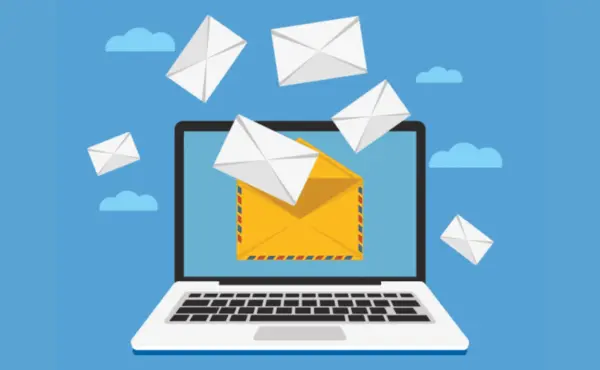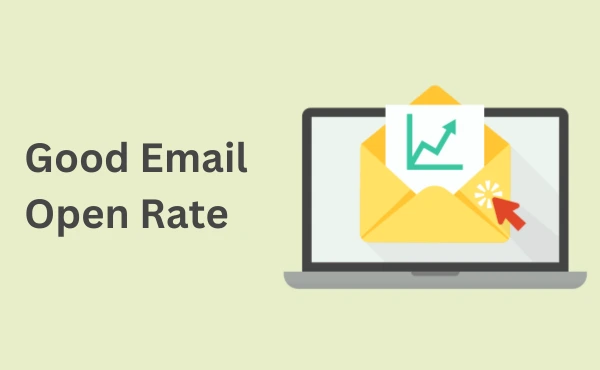Yes, Boost Inbox is designed to cater to businesses of all sizes and industries.
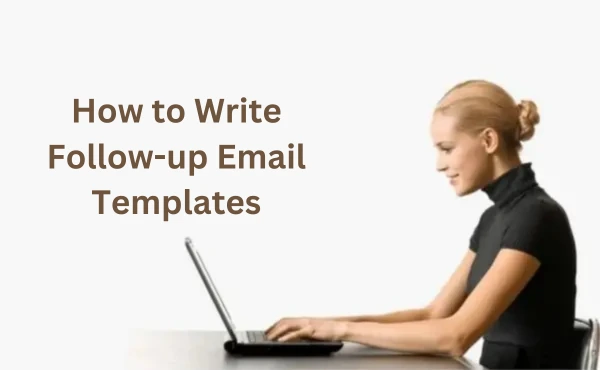
- Understanding Follow-Up Emails
- Why Follow-Up Emails Are Essential for Success
- Main Goals of Follow-Up Emails
- Key Elements of an Effective Follow-Up Email
- Types of Follow-Up Emails
- How Do You Follow Up Without Being Annoying?
- Follow-up email tips:
- Follow-Up Email Templates and Examples
- General Follow-Up Email Templates:
- Follow-Up Email After No Response:
- Job Application Follow-Ups Email Templates:
- Job Interview Follow-Up Email Template:
- After Interviews Follow-Up Template:
- Sales Follow-Up Email Templates:
- Meeting Follow-Up Email Templates:
- Polite Follow-Up Email Templates:
- Networking Follow-Up Email Templates:
- Marketing Follow-Up Email Templates:
- Link Building Follow-Up Template:
- Sales Outreach Follow-Up Template:
- B2B follow-up email templates:
- Guest Post Follow-Up Template :
- Post-Event Email Follow-Up Template:
- Email copywriting best practices For Follow-Up Emails
- Cold email response tips
- Conclusion
- FAQs
A well-written formal follow-up email can significantly influence business interactions, whether in job applications, sales, or professional networking. A follow-up email acts as a link between your first communication and the result you're after, be it a job offer, a sale, or just keeping up a friendship. According to HubSpot, lead nurturing emails generate 4-10 times more responses than standalone email blasts, helping guide potential customers through the decision-making process and increasing conversions.
Understanding Follow-Up Emails
Understanding follow-up emails is crucial for effective communication in both personal and professional settings. These emails are sent after an initial interaction, whether it’s a meeting, interview, or inquiry, to remind the recipient of your message or request.
They help reinforce your interest, show professionalism, and keep you on the recipient’s radar. A study by Boomerang found that follow-up emails can increase response rates by up to 48%, making them a valuable tool for professional communication. By mastering the art of follow-up emails, you can improve your chances of achieving goals, building relationships, and ensuring timely communication.
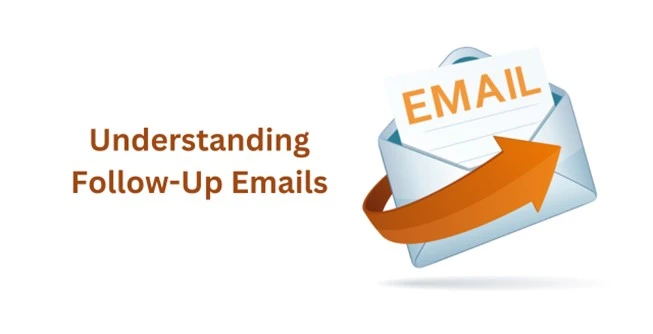
What is a Follow-Up Email?
A follow-up email is a message sent to maintain communication following an initial contact or conversation. It serves as a kind of subtle nudge to keep things on course. A follow-up email could be sent to inquire about an update, get clarification, or just to remind someone of a crucial subject.
For example, after a job interview, you may know writing follow-up emails to express gratitude for the interviewee's time and inquire about any updates on the position. After a business meeting, you could follow up to find out if they need additional information or if they have any queries. It demonstrates your continued interest and involvement.
Another excellent method to maintain organization and professionalism is to send a follow-up email. It demonstrates to the other person your seriousness about the discussion or project and your readiness to move on. Follow up emails help you stay in the spotlight and advance your career, whether it's for a job, sales, or simply staying in contact. To put it simply, follow-up emails are a fantastic approach to ensure that you don't pass up opportunities!
When to Send a Follow-Up Email:
To keep things going, it's critical to know when to send a follow-up email. Sending one is a good idea in the following situations:
After a Meeting or Call:
It's crucial to send a follow-up email following a phone conversation or meeting. This email demonstrates your gratitude for the other person's time and focus. You can express gratitude for the discussion and quickly recap the key points you covered. This keeps the conversation moving forward and demonstrates your seriousness about the topics covered.
It's a fantastic method to maintain communication and make sure everyone is in agreement. Additionally, sending this email presents you as respectful and professional, which might foster future interactions. Following up after meetings ensures continuity in the way you practice how to write cold emails.
Post-Interview Email:
Sending a follow-up email after a job interview is a terrific approach to demonstrate your continued interest in the role. You might convey your joy about the employment opportunity and thank the interviewer for their time in this email.
It's a kind and expert method to remind them of your interest and to stay in their mind. According to a study by CareerBuilder, 22% of hiring managers are less likely to hire a candidate who doesn’t send a follow-up email after an interview. It can improve your chances of getting hired by demonstrating your commitment to the position and consideration for your time.
When There Is No Response to an Initial Email:
It's acceptable to send a courteous follow-up email if you send one and don't hear back from the recipient a few days later. This helps verify that the individual received your initial message and indicates that you are still awaiting a response. Be considerate and polite when following up because the person may be busy.
Without being overbearing, a kind reminder can improve your chances of receiving a response. It also demonstrates your commitment to receiving a response and your seriousness about the subject. Just be careful to maintain a professional yet cordial tone.
Following Up on a Job Application or Proposal:
Sending a follow-up email to inquire on the status of a proposal or job application is a smart move. This email demonstrates your continued enthusiasm and interest in the possibility. It's a courteous method to follow up and remind them of your idea or application.
Sending them a follow up email after meeting can help them remember you and may even expedite the process. Just remember that they may be busy, so be patient and respectful. You can demonstrate your seriousness and want to proceed by sending this email.
These are all good times to send a follow-up email to keep things moving and stay in touch!
Why Follow-Up Emails Are Essential for Success
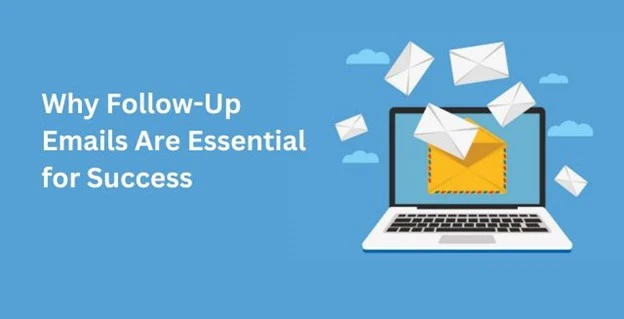
An important but frequently overlooked aspect of business proposal follow-up is the use of effective communication for email marketing campaigns. Poorly worded messages or a failure to follow up result in many missed chances, not a lack of passion. Effectively written lead nurturing emails and customer engagement emails show commitment, expertise, and sincere interest. Reminding people that you're still active through these follow-ups can have a big impact on networking, business chances, and job prospects.
Composing successful follow-up emails is essential to influencing events to your advantage. They demonstrate your organization and sincerity while keeping you in the recipient's mind. This little action guarantees that your message will be remembered, particularly if the listener has been distracted or preoccupied.
Additionally, follow-up emails demonstrate professionalism, gratitude for the chance to communicate, and respect for the other person's time. It shows attention and commitment to send a follow-up after a meeting or to remind someone of a previous conversation.
The fact that follow-up emails improve your odds of getting a response is one of the main reasons they work. Since most people are too busy to respond right away, a follow-up politely and non-intrusively reminds them of your interest. A follow-up email is an effective way to get results, whether you're looking for a job update, waiting for a sales answer, or carrying on a conversation.
In conclusion, follow-up emails help you stay memorable, increase your chances of getting the reaction you want, and project professionalism and deference.
Main Goals of Follow-Up Emails
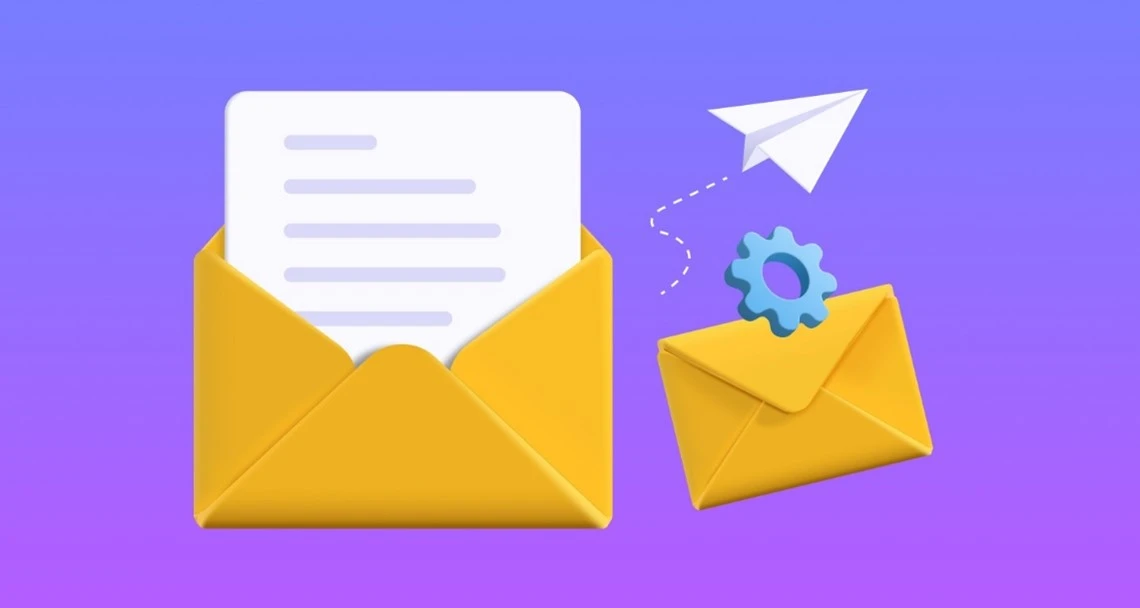
Increase Response Rates:
Increasing email open rates is essential to making sure your message is noticed and not missed. Create an Email Follow-Up strategy for success, a well-written follow-up email serves to reinforce the significance of your previous communication by reminding recipients of it.
Sending a courteous and prompt follow-up encourages the receiver to give your message top priority because it demonstrates your professionalism and perseverance. Important tactics include putting your call to action in a clear and concise manner, giving context, and crafting an attention-grabbing subject line.
In addition to increasing the likelihood of a response, this strategy shows your dedication and regard for their time, which can ultimately improve your working relationship and help you accomplish your goals more successfully.
Build Relationships:
Sending networking email follow-ups demonstrates reliability and persistence—two highly valued qualities in the workplace. Consistent, personalized email communication builds rapport and trust by showing genuine interest and dedication. Developing relationships by sending follow-up emails shows that you are dependable and persistent, two qualities that are highly regarded in the workplace.
Reaching out on a regular basis builds rapport and trust with your connections by demonstrating your sincere interest and dedication. By reminding recipients of your prior exchanges and reaffirming your commitment, follow up emails maintain open lines of communication.
A considerate note shows that you are paying attention and that you value their time, whether you are following up after a meeting, job interview, or first discussion. These initiatives build relationships over time, transforming passing acquaintances into enduring business partnerships that may open up new doors and opportunities.
Achieve Objectives:
Whether you want to close a commercial deal, get a job offer, or promote teamwork, timely follow-ups are essential to reaching your objectives. Your follow-up emails will stay at the top of recipients' minds by reinforcing professionalism and genuine interest through the use of sales email techniques and effective email sequences.
Your message won't be lost in their hectic schedule if you remind them of your earlier conversation or suggestion. You gain a competitive edge by following up, which shows initiative and commitment. This regular communication brings you one step closer to effectively and successfully achieving your goal and raises the likelihood of a favorable reaction.
Key Elements of an Effective Follow-Up Email
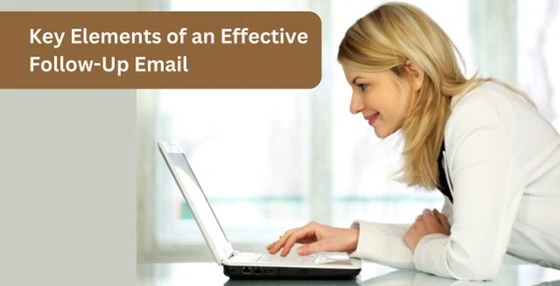
Learn how to write strong calls to action, attention-grabbing beginnings, succinct messaging, and captivating subject lines. By following this guidance, you can make sure that your follow-ups are impactful, professional, and clear, which will help you stay in touch, get answers quickly, and accomplish your objectives. Ideal for any kind of professional outreach!
Subject Line
A follow-up Email subject line idea is crucial since it informs the recipient of the email's purpose. It ought to be concise, straightforward, and direct. When someone opens an email, a well-written subject line lets them know exactly what to expect.
Use Touch base email phrases like "Follow-Up," " Friendly email reminders," or "Checking In" to indicate that you're getting in touch with them again. Make sure to include a specific meeting or topic in the Email subject line ideas of your follow-up, such as "Follow-Up: Meeting on Monday" or "Reminders: Interview Last Week." Including information such as the topic or date of the meeting makes it easier for the recipient to instantly recall the subject of your email.
In a crowded inbox, a compelling subject line makes your email stand out. It helps the receiver understand the purpose of opening your email. They are more likely to read your message and reply if the subject line is clear and relevant to what you have already discussed. Subject lines optimized with email marketing personalization captivate the recipient's attention.
To put it briefly, a catchy subject line ensures that your email is seen and helps establish Professional Email tone of voice for your follow-up. It's a tiny action that can have a significant impact!
Email subject line examples:
“Just Checking In Any Thoughts on the Subject Line Ideas?"
“Following Up: Did You Find the Email Subject Lines Helpful?"
“Quick Follow-Up: Ready to Move Forward with These Subject Lines?"
Greeting
A follow-up email's greeting is crucial since it establishes the tone for the entire correspondence. To demonstrate your professionalism and consideration, you should always begin with a kind and kind greeting.
It's preferable to use the person's name if you know it. Saying "Dear [Name]" or "Hello [Name]" are two examples. The email feels more intimate and considerate when the recipient's name is used. You can use a generic welcome like "Hello" or "Dear Sir or Madam" if you don't know their name.
The salutation needs to be cordial yet official. This demonstrates your concern for the recipient while also establishing a professional tone. Although being courteous is vital, you can still welcome people with warmth and friendliness. Saying "Hello [Name], I hope you're doing well," for example, offers a personal touch without sacrificing professionalism.
Using an appropriate greeting at the beginning of your email demonstrates your regard and consideration for the recipient's time. Personalized email greetings promote a favorable response and give your follow-up email a more sincere vibe. The greeting is a brief but crucial section of your email that helps establish the tone for the remainder of the correspondence.
Context/Reminder
A follow-up email's "Context/Reminder" part is where you quickly remind the recipient of the subject of your previous email exchange or request. This section is crucial since it aids in the person's memory of what you're talking about, particularly if they have a lot of other emails or assignments to finish.
You should avoid including too many details and instead be straightforward. If you have a project-related meeting, for instance, you may write something like, 'I wanted to follow up on our meeting last Tuesday about the marketing plan.' Without requiring readers to read too much, this provides them with a brief reminder of the email's purpose. This is one of the key follow-up email strategies, keeping your message concise and to the point to ensure clarity and maintain engagement.
It's critical to keep this part brief and direct. Offer just enough details so that the recipient recalls your first request or conversation, rather than restating everything you've already said. They will be prepared to act as soon as they have a clear understanding of the email's goal.
By sending this reminder, you facilitate the recipient's recall of your previous message and facilitate their response. It's a fantastic method to ensure that your follow-up is efficient and transparent!
Value Proposition/CTA
A follow-up email's "Value Proposition" and "Call-to-action" (CTA) sections outline the significance of your request and the appropriate course of action. In this section of the email, you explain to the recipient the benefits of answering or acting. It might have to do with how your meeting, comments, or answer will further your mutual goals.
To set up a meeting, for instance, you may remark, "I think a brief conversation could help clarify the next steps for the project." This gives people a cause to act and demonstrates that the meeting will be beneficial.
The section where you request a specific next step is known as the Call to Action. It could be as simple as asking them to respond to your email, confirm a time for a meeting, or provide you with feedback. "Please let me know your availability for a meeting next week" is an example of simple and Clear email requests.
Be sure your call to action respects the person's time. This entails requesting something straightforward and low-effort. The recipient will feel more at ease acting if you provide value and are explicit about what you require!
Closing
A follow-up email's "Closing" is the last section when you make a courteous and expert statement. Even if you haven't heard back, it's still crucial to express gratitude for the person's time or assistance. This demonstrates respect and gratitude.
Use a kind ending to your message, such as "Best regards," "Sincerely," or "Kind regards." These are polite and appropriate ways to conclude an email. Maintaining a courteous and upbeat tone helps the recipient feel appreciated.
Your name and contact details should then be included at the conclusion of the email. This is beneficial since it makes it simple for the person to contact you in case they need to. For instance, if you feel it's necessary, you can write "Best regards, [Your Name]" and then your phone number or email address.
Your opportunity to make a strong, lasting impression is during the closing. A courteous, businesslike conclusion will demonstrate to the receiver that you value their time and take your correspondence seriously. This can improve the likelihood of receiving a response and foster a good rapport.
Types of Follow-Up Emails
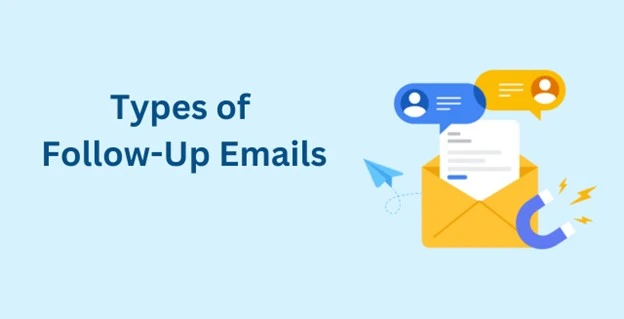
General Follow-Up Emails:
Following meetings or networking events, general follow-up emails and B2B follow-up email are crucial communications that keep you in touch. A follow up email serves as a reminder to the other person that you would still like to stay in contact. It demonstrates your interest in the discussion and your appreciation for their time with you.
For instance, you can quickly follow up with an email after a networking event or business meeting to express gratitude for the person's time and to remind them of any significant points you covered. This small gesture can keep you in their thoughts and demonstrate your professionalism and organization. It's also a wonderful method to show your thanks and thankfulness.
These emails can also be used as a polite reminder to finish any assignments or other activities. A follow up email keeps things going if there was something you were waiting for or that you agreed to do.
You may demonstrate your professionalism, strengthen connections, and maintain open lines of contact by sending general follow-up emails. They are a tiny effort that can help you maintain relationships with key people and open you more prospects.
Example:
Subject: Have you tried using [tool] for [goal]?
Hello [First Name]
Meeting you at [Name of Event] was fantastic. I thought I would offer a book that I utilized to surpass my own target goals by [result], because I recall you saying you're aiming to redo [Project] next quarter.
I just sent you the Kindle version of the book, which is named [Name of Book]. I hope you enjoy it!
If you want, I'd be happy to talk about the book or my methodology. Tell me, please!
[Signature]
Follow-Up Email After No Response:
After receiving no response, sending a follow-up email after no response serves as a polite reminder to ensure that your message is remembered. People can occasionally be too busy to view or respond to your email straight away. You can respectfully let them know you're still interested and awaiting a response by emailing a follow-up.
This kind of correspondence demonstrates your perseverance, or your inability to give up quickly. Being kind and considerate in your handling of the matter also demonstrates professionalism. A well-written follow-up only reminds the recipient of your initial communication and provides them with another opportunity to reply, without being overbearing.
It's a good idea to briefly explain your purpose for contacting them in your follow up email. To add more value, you can also include something fresh or beneficial. When following up on a job application, for instance, you might bring up a new talent you've picked up since your last conversation. Your follow-up may seem more current and pertinent as a result.
You can improve your chances of receiving a response without coming across as obnoxious by sending a follow-up email after receiving no answer. It's a fantastic method to maintain professionalism, persistence, and courtesy!
Example:
[Business’] contract up for renewal
Hello [name],
It's [your name] from [the name of your business]. I hope this week is going well for you.
My email on the renewal of your contract was sent to you; did you get it? I'm bumping this up in your inbox just in case.
The grace period is set to expire, and your contract was renewed on [date].
I would happy to discuss other possibilities. Would you be available for a fifteen-minute call on Thursday morning?
Regards,
[Signature]
Post-Interview Follow-Up Emails:
Sending a follow-up email after a job interview is a fantastic approach to demonstrate your professionalism and enthusiasm. It can make a good impression and serves to remind the interviewer of your interest in the position. This email is intended to thank them for their time and to convey your appreciation for the interview opportunity.
You can also use a follow-up email after the interview to discuss something you think could improve your chances or to clarify something you may have overlooked. For instance, in the follow-up email, you may briefly highlight a skill you neglected to mention or a topic you didn't adequately address.
This email helps the interviewer remember you, especially if they are interviewing a lot of applicants. It might help you stand out from the competition by demonstrating your seriousness and consideration.
An effective follow-up email can significantly influence the hiring decision. It can boost the interviewer's confidence in selecting you by reminding them of your strong suitability for the position. In summary, follow-up emails after an interview are an effective way to demonstrate professionalism, excitement, and a positive outlook!
Example:
"Subject: Thank you for your time
Hi [Name],
thank you for the opportunity to discuss [position] with you. I’m very excited about the possibility of joining your team.
Regards,
[Signature]”
How Do You Follow Up Without Being Annoying?
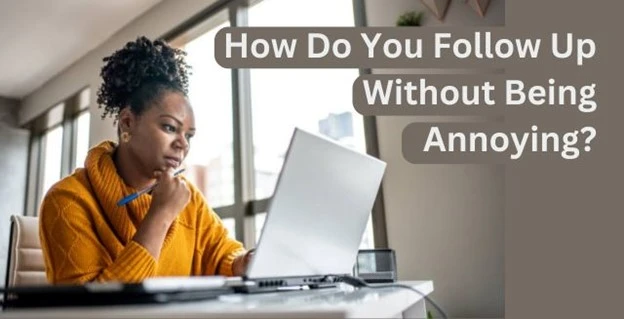
The process of following up can be tricky, particularly if you want to make sure your message is understood without coming across as intrusive or controlling. Finding a balance between perseverance and consideration for the other person's time is essential for an effective follow-up.
Make sure your first message is focused, succinct, and clear. Explaining why you are contacting them again and your goals is crucial whether you are doing for a job application, Unpaid invoice email or Invoice reminder email, sales inquiry, Discovery call recap email, Inquiry response email, Content download follow-up or meeting request follow-up email. This lessens the possibility that the receiver may perceive your message as unsolicited by providing them with a clear explanation of why you are following up.
Additionally, Follow-up email timing is essential. Waiting too long can give the impression that you are uninterested, but following up too soon can feel intrusive. Waiting three to five business days following your initial message is a fair rule of thumb. This guarantees that your follow-up is still pertinent while giving the recipient the time to reply.
Keep the tone of your follow-up email professional, courteous, and kind. Express gratitude for the recipient's time and acknowledge that they could be busy. If they haven't had a chance to reply yet, show your understanding. By doing this, you avoid coming across as demanding or impatient and demonstrate empathy.
Customization is also another crucial component. Tailor your follow-up to the particular circumstances of the recipient. Mention specifics from earlier emails or chats to show that you are genuinely interested and connected.
Finally, be ready for no answer. Moving on is usually preferable to pressing further if you don't hear back after a few follow-ups. Maintaining professional connections requires both persistence and respect for boundaries.
Follow-up email tips:
Proper formatting improves readability and guarantees that your content is understandable and straightforward when sending business emails. The following formatting guidelines can help you organize your email more efficiently:
Keep Paragraphs Short:
Reading lengthy text passages can be scary and challenging. One topic can be effectively communicated by using professional email formats with succinct, targeted paragraphs. This format improves the readability of your email and keeps users interested as they read it. Generally speaking, paragraphs should not exceed three or four sentences.
Use Bullet Points for Clarity:
It can be helpful to highlight crucial details or necessary activities with strong writing. But it's crucial to avoid going overboard. Excessive usage of strong language can detract from your primary message and make your email appear cluttered. Make strategic use of it to draw attention to important details, such as names, deadlines, or important terms.
Highlight Key Points with Bold Text (Sparingly):
It can be helpful to highlight crucial details or necessary activities with strong writing. But it's crucial to avoid going overboard. Excessive usage of strong language can detract from your primary message and make your email appear cluttered. Make strategic use of it to draw attention to important details, such as names, deadlines, or important terms.
Use Headings or Subheadings:
Use headings or subheadings to help the reader navigate the content of lengthier emails or emails that cover several topics. This aids in text organization and facilitates the recipient's ability to swiftly locate pertinent information.
Use a Professional Font and Format:
Use professional typefaces with a font size of 10–12 points, such as Arial, Calibri, or Times New Roman. Steer clear of ornate or highly stylized typefaces, since they could take away from the professionalism of your message. A neat, professional appearance is also influenced by consistent formatting and space.
By following these formatting tips, you ensure that your email is well-structured, easy to read, and conveys a professional tone, making it more likely to be well-received and understood by the recipient.
Follow-Up Email Templates and Examples
Explore effective response-driven email examples and follow-up templates. Learn how to create prompt, customized follow-ups for a range of situations, including sales outreach and client check-ins. By keeping your message focused, professional, and convincing, these tried-and-true templates increase the likelihood that you will get a response and create enduring connections. Ideal for any professional!
General Follow-Up Email Templates:
"Subject: Just Following Up on [Topic]
Hi [Name],
It was great connecting with you at [event/meeting]. I wanted to follow up and see if you had any further questions.
Regards,
[Signature]”
Follow-Up Email After No Response:
Subject: Following Up on My Last Email
“Hi [Name],
Just a quick follow-up to see if you had a chance to review my previous email about [topic].
Regards,
[Signature]”
Job Application Follow-Ups Email Templates:
"Subject: Following Up on My Application for [Position]
Hi [Name],
Briefly reiterate your enthusiasm and qualifications for the role. Politely inquire about the status of your application.
Regards,
[Signature]”
Job Interview Follow-Up Email Template:
Subject line: Thank you for your time
“Hi [Interviewer],
I wanted to express my gratitude for our interview on [date]. It was a pleasure to learn more about [company]. I look forward to your feedback.
Regards,
[Signature]”
After Interviews Follow-Up Template:
“Subject: Thank You for the Opportunity
Dear [Name],
I wanted to thank you again for the opportunity to interview for [position]. I am very excited about the possibility of contributing to [company’s goals].
Regards,
[Signature]”
Sales Follow-Up Email Templates:
“Subject: Still Interested in [Product/Service Name]?
Hi [Recipient's Name],
I hope this message finds you well. I wanted to follow up on our recent conversation about [product/service]. I believe it could [mention key benefit, e.g., "streamline your workflow" or "improve efficiency"].
Are there any questions or additional information you need to help with your decision? I’d be happy to schedule a quick call to discuss further.
Looking forward to your response!
Best regards,
[Your Name]
[Your Position]”
Meeting Follow-Up Email Templates:
“Subject: Action Items from Our Meeting on [Date]
Hi [Recipient's Name],
Thank you for a productive meeting on [date]. I’ve summarized the key action items below:
• [Task 1]: [Person Responsible]
•
• [Task 3]: [Next Steps]
Let me know if you need any further clarification or assistance. Looking forward to our continued collaboration!
Best,
[Your Name]”
Polite Follow-Up Email Templates:
“Subject: Just Following Up on My Last Email
Hi [Recipient's Name],
I hope this message finds you well. I wanted to kindly follow up on my previous email regarding [mention the topic or request, e.g., “the proposal I sent last week”]. I understand you’re busy, and I appreciate your time and consideration.
Please feel free to reach out if you need any additional information or if there’s a convenient time for us to discuss further.
Thank you so much, and I look forward to hearing from you soon.
Warm regards,
[Your Name]
[Your Position]
[Your Company]”
Networking Follow-Up Email Templates:
“Subject: Great Connecting with You at [Event/Conference Name]
Hi [Recipient's Name],
It was a pleasure meeting you at [event name] last [day/week]. I really enjoyed our conversation about [mention a specific topic discussed, e.g., “digital marketing trends”].
I’d love to stay in touch and continue our discussion on [shared interest or professional topic]. Feel free to reach out if you'd like to share insights or collaborate in the future.
Looking forward to connecting again soon!
Best regards,
[Your Name]
[Your Position]
[Your LinkedIn Profile]
[Your Company/Contact Information]”
Marketing Follow-Up Email Templates:
“Subject: Following Up on Our Recent Marketing Proposal
Hi [Recipient's Name],
I hope you're doing well! I wanted to follow up on the marketing proposal I sent over last [day/week]. I believe our services could significantly benefit your business, and I’d love to hear your thoughts on how we might move forward.
If you have any questions or need further details, please don’t hesitate to reach out. I’d be happy to set up a time to discuss how we can help achieve your marketing goals.
Looking forward to hearing from you soon!
Best regards,
[Your Name]
[Your Position]
[Your Company]
[Contact Information]”
Link Building Follow-Up Template:
“Subject: Following Up on Our Link Building Partnership
Hi [Recipient's Name],
I hope you're doing well! I wanted to follow up on my previous email regarding the potential link-building partnership between [Your Company Name] and [Their Website Name]. I believe that our collaboration could bring mutual benefits, particularly in improving both our SEO efforts.
If you're interested, I’d be happy to discuss the next steps and share some ideas on how we can integrate each other’s content into our respective sites. Please let me know if you’re available for a brief chat or if you have any questions.
Looking forward to your response!
Best regards,
[Your Name]
[Your Position]
[Your Company]
[Contact Information]”
Sales Outreach Follow-Up Template:
“Subject: Checking in on Our Recent Conversation
Hi [Recipient's Name],
I hope you're doing well! I wanted to follow up on our recent conversation regarding [product/service] and see if you had any further questions or thoughts about how it could benefit your [business/needs].
We’re confident that [product/service] can help you [specific benefit], and I’d love to schedule a time to discuss how we can get started.
Please let me know if you're available for a quick call or if you’d like me to send over more information. Looking forward to hearing from you!
Best regards,
[Your Name]
[Your Position]
[Your Company]
[Contact Information]”
B2B follow-up email templates:
Subject Line: Following Up on Our Recent Conversation
Hi [Recipient’s Name],
I hope this message finds you well. I wanted to follow up on our recent conversation regarding [specific topic or service discussed]. We’re excited about the possibility of collaborating with [Recipient’s Company Name] to [mention key benefit or solution].
If you have any questions or need more information, please feel free to reach out. I’d be happy to schedule another call to discuss this further.
Looking forward to hearing from you!
Best regards,
[Your Full Name]
[Your Position]
[Your Company Name]
[Your Contact Information]
Guest Post Follow-Up Template :
“Subject: Following Up on My Guest Post Submission
Hi [Recipient's Name],
I hope you're doing well! I wanted to follow up on the guest post I submitted for [website/blog name] on [date of submission]. I’m excited about the opportunity to contribute and wanted to check if there’s any update on the review process.
If there are any additional details or edits you’d like me to make, please don’t hesitate to let me know. I’m happy to collaborate to ensure it fits perfectly with your audience.
Looking forward to hearing from you!
Best regards,
[Your Name]
[Your Website/Blog Name]
[Your Contact Information]”
Post-Event Email Follow-Up Template:
“Subject: Great Connecting at [Event Name]!
Hi [Recipient's Name],
It was a pleasure meeting you at [event name] last [day/time of the event]. I enjoyed our conversation about [topic you discussed], and I wanted to follow up to see if there’s an opportunity for us to collaborate further.
If you're interested, I’d love to explore how we can [mention any potential collaboration, partnership, or next steps]. Let me know if you’re available for a quick call or meeting sometime soon to discuss this.
Thank you again for your time at the event. I’m looking forward to continuing our conversation!
Best regards,
[Your Name]
[Your Company/Organization]
[Your Contact Information]”
Email copywriting best practices For Follow-Up Emails
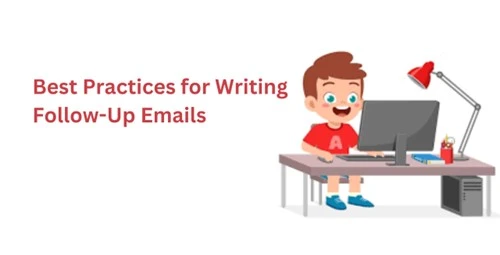
Timing Your Follow-Up:
It's crucial to know when to write a follow-up email and how long should I wait to end a Follow-Up Email. Sending something too soon could give the impression that you're being pushy or rushing the other person. However, people may lose interest or forget about your initial contact if you wait too long to follow up.
A few days to a week following your initial contact is typically the ideal time to send a follow-up. This allows time for the recipient to react without feeling rushed. Additionally, it demonstrates your patience and regard for their time, which gives you a polished appearance. Waiting too long could make your email appear less pertinent and cost you the opportunity to receive a response.
Finding the ideal balance is facilitated by prompt follow-up. It serves as a gentle reminder of your request or conversation and demonstrates your continued interest without coming across as intrusive. While remaining kind and professional, sending your email at the correct moment can significantly impact the response you receive. Therefore, keep in mind that when writing a follow-up email, timing is crucial!
Maintaining a Professional Tone:
Maintaining a professional tone is crucial when drafting a follow-up email. This entails speaking, courteously, and with respect. Slang and informal language can make you come across as less serious, therefore you should refrain from employing them. Instead, concentrate on speaking politely and appropriately.
Being straightforward and on topic are also components of a professional tone. Avoid including extraneous facts that could mislead the reader. You want your message to be understandable and unambiguous. When you respect the other person's time, you make sure your email is brief yet informative so the recipient can quickly read it and understand what you're requesting.
For instance, you could write, "Thank you for taking the time to meet with me today," in a thank-you email following a job interview. I hope to hear from you soon because I'm highly interested in the role. This demonstrates your professionalism and seriousness and is kind, straightforward, and respectful.
Speaking professionally improves Personalized email communication and makes a good first impression. It demonstrates your regard for the recipient of your email, which can foster stronger bonds and provide greater results.
Email follow-up mistakes to avoid:
Avoiding a few frequent blunders when drafting a follow-up email can help increase the likelihood that you will receive a response. The following points should be remembered:
Don't be pushy first. Reminding someone of your message is acceptable, but sending too many follow-up emails can come out as irritable or impatient. Before sending another email, give the recipient some time to reply.
Secondly, don't send too many follow-ups. Usually, one or two kind reminders are enough. After that, it's better to wait or think about contacting them in another method if you don't hear back. Sending too many emails can come across as overwhelming or desperate.
Finally, proofread for mistakes and typos. Always thoroughly read your email before sending it. Grammatical or spelling problems can give the impression that you are not a professional. Verify everything one last time to ensure that your message is accurate and clear.
You may ensure that your follow-up emails remain courteous and businesslike by avoiding these errors. You may achieve the response you desire by being patient, avoiding being overbearing, and making sure your email is error-free!
Cold email response tips
Use these tried-and-true response strategies to increase the success of your cold email campaigns. Learn how to create compelling communications, successfully tailor them, and follow up in a professional manner. By being an expert at persuasive communication, you can raise open rates and convert prospects into customers. Ideal for salespeople and marketers looking to improve their performance.
Respond Quickly:
Don’t leave the email hanging for days or weeks. A timely reply keeps the communication relevant and shows professionalism.
Be Brief but Clear:
Keep your response concise while addressing the main points. Avoid rambling or over-explaining.
Maintain Tone:
Keep your tone friendly but professional. Avoid being overly casual unless the sender is very informal.
Avoid Being Negative:
Even if you're not interested, stay polite and neutral. There's no need to be harsh or dismissive.
Conclusion
An essential tool for professional communication is the follow-up email. They improve your chances of achieving your objectives and help you maintain relationships with others. A well-written follow-up email demonstrates your professionalism, professionalism, and seriousness, whether you're following up after a job interview or sending a thank-you email after receiving no answer.
A follow-up email serves to remind the recipient of your previous email exchange or request. This can assist you in obtaining the response you require, be it a choice, additional information, or feedback. A thorough follow-up creates a favorable impression by demonstrating your organization and responsibility.
To sum up, follow-up emails are straightforward but effective. They assist you in establishing connections, maintaining communication, and demonstrating your regard for other people's time. Whether you're attempting to continue a conversation, clinch a deal, or get a job, taking the time to compose a considerate follow-up email can have a significant impact on your success. Therefore, always remember to follow up with an email when necessary, and make sure it is professional, kind, and clear. Check out our other blog what are Customer Pain Points: How To Identify And Solve Them?
FAQs
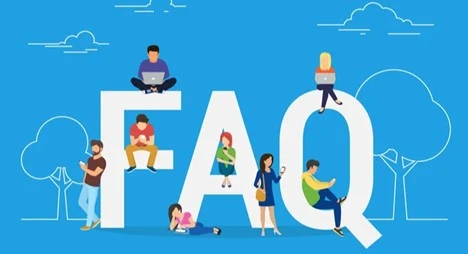
How many follow-up emails should you send?
Usually, 1-2 follow-ups are appropriate, depending on the context.
How long should you wait before following up?
Wait 3-7 days for general emails and 1-2 days for urgent matters.
How do you write a follow-up email without sounding pushy?
Be polite, focus on adding value, and avoid aggressive language.
What to read next
Absolutely! Boost Inbox is compatible with most major email service providers.
The warmup process duration may vary depending on your email volume, but it typically ranges from a few days to a couple of weeks.
Yes, Boost Inbox offers dedicated customer support to assist you throughout the warmup process.
While it's possible, it's best to start the warmup process from the beginning with Boost Inbox for optimal results.
